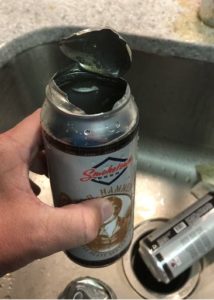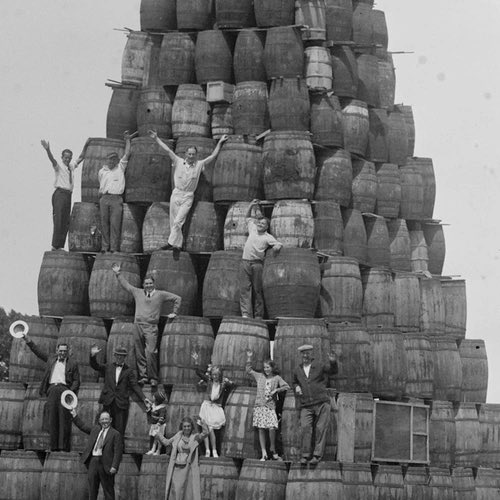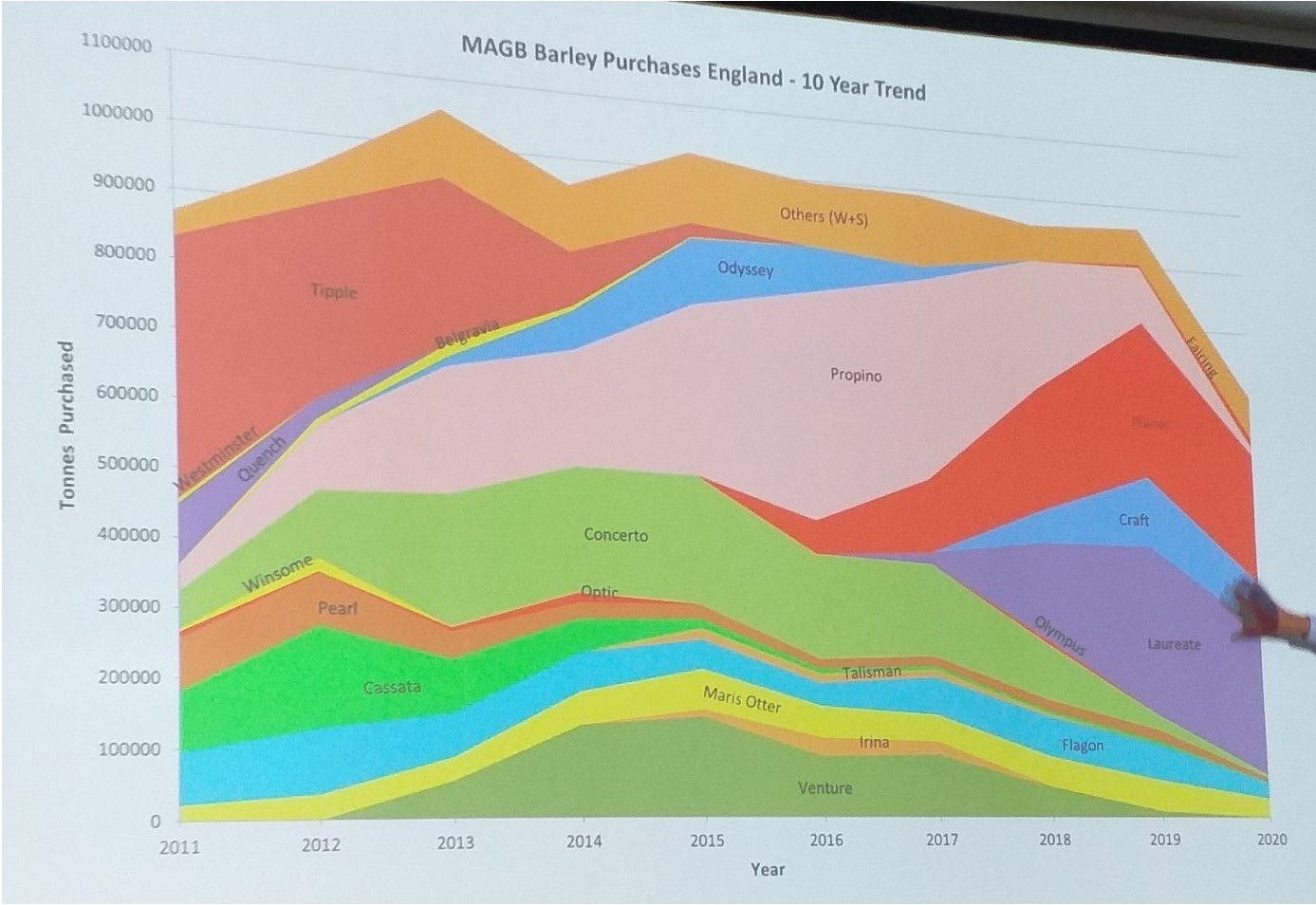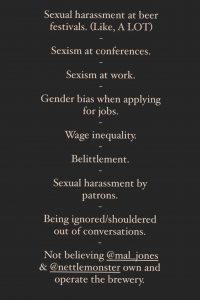 August. It’s coming. Even though it’s the month of my road trip holiday, the first in two years, no one says “Yay! August!!” do they. It’s the last gasp, the slipping away of the sands of summer. The first hint of sweater weather. Darker beers to suit darker days. The crops are coming in, as the scene in Norfolk, England shows.
August. It’s coming. Even though it’s the month of my road trip holiday, the first in two years, no one says “Yay! August!!” do they. It’s the last gasp, the slipping away of the sands of summer. The first hint of sweater weather. Darker beers to suit darker days. The crops are coming in, as the scene in Norfolk, England shows.
 How is that barley crop doing… for those of you still drinking grain based beverages. Not well. Bryan R. tweeted a very graphic graphic, shown to the right. The US barley crop is collapsing under the heat. Canadian farmers planted 8.3 million acres of barley in 2021, up 9.7% encouraged by last year’s crop but it’s been dry and hot here, too. Northern Ireland looks to be in better shape. France looks fine, too. The rest of the western EU may be dealing with too much rain.
How is that barley crop doing… for those of you still drinking grain based beverages. Not well. Bryan R. tweeted a very graphic graphic, shown to the right. The US barley crop is collapsing under the heat. Canadian farmers planted 8.3 million acres of barley in 2021, up 9.7% encouraged by last year’s crop but it’s been dry and hot here, too. Northern Ireland looks to be in better shape. France looks fine, too. The rest of the western EU may be dealing with too much rain.
How’s the hops? Stan has issued his latest update on the hops markets, Hop Queries. And it contains an interest discussion on the effect of heat waves on the NW US crop this year:
“One variety that could cause issues is Cascade, as other growers have seen it hit hard.” This comes at a time that farmers have reduced Cascade acres because brewers cut back contracts. Brewers who are counting on buying fresh Cascade at below contract prices on the spot market, which has become standard operating procedure for many smaller breweries, maybe be unpleasantly surprised. (There will still be older Cascade around, but perhaps available for a good reason.) As is to be expected, the heat was hardest on “babies” (first-year plants) because they aren’t yet established. And, of course, the babies tend to be in-demand varieties, because growers are going to plant what brewers want. For instance, a field with Chinook will include only a few babies (replacing plants that grew old or became diseased), and Chinook stood up well to the heat.
Expected result? Less supply of the most desired varieties.
Lingering or revived pandemic blues got you down? Missing the many still delayed fests? Head east!
The 31st Qingdao International Beer Festival, one of the largest beer festivals in China, opened on Friday evening in the coastal city of Qingdao, East China’s Shandong province. The 24-day carnival has gathered more than 1,600 beers from over 40 countries and regions, according to the tourism commission of the Xihai’an (West Coast) New Area, where the festival is taking place. There will be over 400 activities covering international exchanges, economic and trade exhibitions, fashion shows, parades and performances during the festival.
These things are apparently a thing. Room to grow, too. Ten tents in 2022, I say!
Martyn wrote about the development of the water supply for brewing in the City of London in one of those pieces on history that does not make you yearn for the earliest of the good old days:
…despite the mythology that surrounds the river’s historic alleged unwholesomeness, brewers made use of its water to brew their beer for centuries: In 1509 the Bishop of Winchester (who owned considerable land alongside the river in Southwark – much of it occupied by brothels) and the Priory of St Mary Overies granted a license to the brewers of Southwark to have passage with their carts “from ye Borough of Southwark until the Themmys … to fetch water … to brew with,” so long as the brewers did not try to claim the passage as a highway, a license renewed by later bishops. (The Thames at Southwark is surprisingly shallow at low tide, and horse-drawn carts could be driven some way out into the stream to collect water in casks.)
Speaking of water, here as link to an interesting piece by BBC Scotland on the changing attitudes younger folk have towards alcohol. Apparently, 29% of youff are dry, up 10% over the last 15 years. If you can’t access the BBC Scotland site, here’s a brief intro. Bottom line – don’t be planning your business on an expanding beer market over the next few decades.
Elsewhere, the young folk are being less sensible as this report from France of the situation in Mexico explains:
Like all businesses in the capital — home to around nine million people — customers in the bars of Zona Rosa have their temperatures checked and are asked to use hand sanitizer. “People want to drink,” said bar owner Ernesto Castro. “The truth is that young people don’t care if they’re going to be infected or not. They want to party,” the 55-year-old said. “They feel that they’re not going to be infected and it’s a problem because the pandemic is still there and getting worse.” Last Friday the authorities raised the pandemic alert level in the capital, but did not impose new restrictions on economic or social activities.
Jenny Pfäfflin drew my attention to claims made about “natural beer“:
I’m not against alternative beers, but marketing it as more “natural” or “wholesome” than barley beer is a lot to unpack.
Seems similar to the idea of “sustainable” beer in Australia. The natural stuff is based on banana and honey and seems to be yet another weird beverage that flies the banner de jour, including the “heritage” banner. Note: “heritage” is the word for history where you leave out the bits you don’t like and rearrange what’s left to maximize comfort levels. In this case, it seems to be a tribute to craft’s heritage of banging things in to a pot and making up a back story to sell the stuff.
By the way, I never know how to react to a majoritarian/ privileged voices presenting a selection of minority/ under privileged voices. Curated protest? Appropriation of anti-appropriation? Seeing it a lot this year. But conversely, at least it is better than the bizarre branding we see in Poland: “White IPA Matters”!
The company has not responded to the allegations and complaints yet. Mr Mentzen, the owner of the brand, is a member of Poland’s right-wing Confederation party and has contested two elections – local elections in Poland’s Torun city in 2018 and for the European parliament in 2019 – both of which he lost, according to the Daily Mail.
Finally and perhaps related, a fairly sad observation to read:
I miss what my life was before beer.
Probably more common a thought that folk would admit. As you contemplate that, don’t forget to check out those weekly updates from Boak and Bailey mostly every Saturday, plus more with the weekly Beer Ladies Podcast, at the weekly OCBG Podcast on Tuesday and sometimes on a Friday posts at The Fizz as well. There is a monthly sort of round up at The Glass. There is more from the DaftAboutCraft podcast, too. And the Beervana podcast. And sign up for Katie’s weekly newsletter, The Gulp, too. And check out the Atlantic Canada Beer Blog‘s weekly roundup. Plus follow the venerable Full Pint podcast. And Fermentation Radio with Emma Inch. There’s the AfroBeerChick podcast as well! And also look at Brewsround and Cabin Fever. And Ben has his own podcast, Beer and Badword – when he isn’t in hiatus as at the mo, more like timeout for rudeness! And remember BeerEdge, too, and The Moon Under Water.















